Having dominated London’s City skyline for four years, the Gherkin is now appealing to a wide range of occupiers. Shame about the windows, though.
THE BASICS
The cigar-shaped Gherkin is the most distinctive office tower in the City of London. Located at 30 St Mary Axe, the 2004 Stirling prize winner was designed by Foster + Partners and developed by Swiss Re.
The building is 180m high, and the 76,400m2 area inside includes 34 floors of office space, retail areas on the ground floor, three floors of restaurants and a reception hall at the top.
The tower’s windows open for natural ventilation and are backed by spiralling lightwells; these feature were designed to cut energy consumption by half.
Last year, Swiss Re sold the Gherkin to German property company IVG for £630m.
It is now home to 18 companies, including its original owner.
FUNCTIONALITY
Diverse occupants
In the past couple of years, the Gherkin has changed from a bespoke owner-occupied London headquarters for insurance company Swiss Re, to a prime multi-let office building, with all but one floor occupied.
Before that, Swiss Re struggled to let the 17 floors it did not use itself. “It was overprotective about the building’s fit-out,” says Richard Stead, the property services director whom the company brought in to make the Gherkin more amenable to tenants. He now works for IVG.
Once prospective tenants were given a freer rein, they found the office floors lent themselves to a diverse range of business uses. The building now includes office space for solicitors, insurance companies and property developers, financial dealing floors, plush conference rooms, suites and even a private art gallery.
On the downside, the building is not very spatially efficient. The central lift, services core and six spiralling lightwells around the perimeter mean that only 63% of its gross floor area is useful space.
Cellular offices for lawyers
“The building is extremely popular with law firms, because the rectangular spaces can take cellular offices,” says Stead.
Originally, the circular floor plates were conceived of as open-plan spaces, but this was not practical for lawyers, who need to have confidential one-to-one discussions with clients. In addition, the open lightwells allow sound to travel between six floors at a time, which could compromise confidentiality.
Fortunately, the six triangular lightwells around the perimeter mean each floor can be split into six roughly rectangular “fingers”, each about 230m2 in area. These can accommodate cellular offices along three sides.
Extra fan-coil units have been installed in the ceilings of the fingers where cellular offices or digital server units have added to the cooling load, but this had been allowed for in the base building, so no modifications were needed to the central plant.
The largest law firm in the building installed its own private staircase to help integrate its four office floors. Rising up through one of the six spiralling lightwells, the staircase has a minimal steel structure and open treads that form an elegant silhouette within the clear-glazed perimeter wall.
To transfer the extra load to the building’s existing radial beams, a new steel trimmer beam was fixed below the composite floor slab.
Shared floors
The 19th floor is shared by four companies, the smallest of which is the five-strong Primus Guaranty, which has a tiny dealing floor and three cellular offices in one rectangular finger. Sharing this floor called for an internal corridor to be wrapped around the central core of the building to reach the lift lobby.
Restaurants and reception dome
Tenants make regular and enthusiastic use of the restaurants and glass dome at the peak of the building to entertain clients. The 65-cover restaurant and five private dining rooms are reserved for tenants and members of the exclusive London Capital Club. The reception room in the dome can be hired by outsiders.
IMAGE
Iconic image attracts business
The Gherkin’s famous bulging shape can be clearly distinguished from beyond the City and as far away as the M11, 20 miles to the east. In 2004 it won the UK’s top architectural accolade, the Stirling prize, with judges hailing its unique design as “elegant and impressive”.
Yet the tower’s powerful and enduring wow factor is not just a bonus: it is an essential part of the building’s function, as the companies that occupy the Gherkin use it to promote themselves. For many tenants, the building’s appeal to clients is what justifies the annual rent of up to £750/m2 a year, nearly 15% higher than other top-grade City offices.
“Why did we move here? Because of the prestige of the building,” says Fiona Eldridge, office manager of Primus Guaranty.
“Every seminar we hold here is a sell-out,” adds Linda Felmingham, administrator at City law firm Hunton & Williams. Half of one of its two floors is filled by four meeting rooms that can be opened out into one large conference suite for more than 100 people, with its own fully equipped kitchen. “It’s amazing how everyone wants to come to this building. As a result, many doors have opened for us,” says Felmingham.
Exciting workplace
“Staff are still excited about working in the Gherkin,” says Gerry Campbell, facilities manager of Swiss Re, which currently has about 1,100 staff in it.
“They appreciate the office space, the high-quality furniture and the views out. And when they leave the office, they take pride in all the tourists taking photographs of it.”
Felmingham agrees. “We’ve been in the building three years now, and I still love working here,” she says.
Staff appreciate the office space, the high-quality furniture and the views. When they leave the office they take pride in tourists taking pictures.
Gary Campbell, Swiss Re
Top reception hall and restaurant
The reception hall and restaurants are even more of a draw than the offices below. Not only are they the highest social amenities in the City, they also benefit from a spectacular all-round aerial panorama of the whole of Greater London as far as the North Downs.
Quite aside from the views, the top-most reception hall is one of the most breathtaking spaces in London: a dome in the shape of a spacecraft nose, which is airy, bright, column-free and fully glazed all around. “When we hold events upstairs, we get 95% attendance; the usual turnout for events elsewhere is about 60%,” says Felmingham. It is little wonder, then, that the reception hall is booked until 2009.
Too much fresh air
The fresh air offered by the opening windows has been rejected by all tenants except the original owner-occupier, Swiss Re. Even in Swiss Re’s offices, the supply of fresh air was curtailed after staff complained of stuffiness.
Originally, the internal temperature was set to rise to 26°C before the windows would close and air-conditioning take over. This has now been lowered to 24°C, which is the top temperature recommended by the British Council for Offices for air-conditioned, but not naturally ventilated, offices.
Cafe, shops and plaza boost street life
As the tower is only 40m in diameter at its base, much of the site around it has been paved to form a pedestrian piazza the size of eight tennis courts. Tables and chairs are scattered across much of the space in casual Continental style, and these are served by a stylish cafe on the ground floor.
A comfortable environment
Other than trouble with natural ventilation, occupants find the internal environment comfortable. “We don’t suffer from too many hot or cold spots,” says Campbell. “And the noise level is very good.”
Felmingham says: “The air-conditioning is always superb, and I’ve never said that about the other buildings we occupied in the City.”
BUILD QUALITY
An ecological building?
The Gherkin is still promoted as “London’s first ecological building” on Foster + Partners’ website, which claims that it “will use 50% less energy than a traditional prestige office building”. Yet Stead, the building’s property services director, admits that “40-50% energy savings are a bit over-ambitious, because Swiss Re is the only tenant using the efficiencies of natural ventilation through opening windows and no internal partitions to block the air flow”.
The building was designed to admit natural ventilation through windows that open right up to the 32nd floor, when the wind speed is below 10mph and the external temperature is between 20°C and 26°C – that is, up to 40% of the year.
“We try to sell the whole energy package to every new tenant through their M&E consultant,” says Steve Brown, the building services manager. Unfortunately his exhortations have so far fallen on deaf ears, as all tenants except for Swiss Re have opted for full, all-year-round air-conditioning.
“M&E consultants want maximum comfort for their clients and air-conditioning is more controllable than natural ventilation,” says Brown. “In addition, legal, financial and insurance companies want maximum confidentiality, so they have put up glass partitions round their offices, and that leaves nowhere for the fresh air to go.” The financial savings to be made by reducing air-conditioning is little incentive for firms that pay up to £750/m2 a year in rent.
Energy efficiency
In spite of having largely abandoned the building’s most overt green feature, the building makes efficient use of energy through a cleverly integrated package of passive and active environmental controls.
Ample daylight enters through the floor-to-ceiling glazing. This is triple layered with a ventilated cavity and 180 thermal wheels, which together keep internal temperatures even.
Internal temperatures have been fine-tuned by adding 26 air sensors and adjusting the building management system (BMS). Since the building has been fully occupied for less than a year, energy consumption data has not yet been audited.
Window collapse
In April 2005, a bottom-hung window on the 28th floor ripped off its hinges and plunged to the plaza below. It was discovered that one of a pair of two-piece opening devices was slightly worn. In response, 1540 new opening devices were purpose-machined out of single pieces of stainless steel and fitted to all 770 opening windows. The cost was covered by main contractor Skanska and curtainwall supplier Schmidlin. The windows have suffered no further problems, says Stead.
Robust building fabric and services
Neither the building fabric nor the services plant are showing any sign of wear and tear or atmospheric corrosion. “The building and the M&E plant run extremely smoothly, with good robust systems in place,” attests Jason Redman, site manager with maintenance contractor Norland Managed Services.
The boiler rooms and air-conditioning chillers are housed in the basement, with the water from the chillers rising up 35 floors to discharge excess heat from two plant floors sandwiched imperceptibly between the offices and top-most restaurants. The air-handling units are all housed directly beneath the floors they serve.
Plant has been renewed only as part of the routine preventative maintenance programme, and the only improvements have been to add sensors to balance temperatures more evenly across large internal spaces.
Deluxe site management
For an annual service charge of £81/m2, the building is intensively managed, maintained, cleaned and security-controlled by about 90 in-house and contract staff. “The real difference here is having a management team on site,” says Felmingham. “Most office buildings like this are managed off-site by surveyors, and they don’t run properly.”
Stead adds: “Buildings like these have to be run like five-star hotels. If anything goes wrong, we have someone already on site who is able to tackle it. We keep spare parts on site for critical services, such as electricity, gas, water, the BMS and life safety.”
Overall management and maintenance is managed by IVG’s in-house team of four professional staff. Physical repairs and maintenance are carried out by contractor Norland, which operates from the basement and deploys six staff during working hours and two at night.
For routine repairs and adjustments to the internal environment, Norland’s Helena Perrins answers calls from tenants, promises work will be done the same day or overnight, and then relays them to appropriate operatives through manager Redman. The electronic BMS has its own full-time minder employed by Johnson Controls.
Redman underlines his team’s dedication when he says: “We have a very low attrition rate of engineers on this building. It’s a good environment to work in and people feel fulfilled.” Steve Brown, IVG’s building services manager, adds: “If this building is not working well, then I take it very personally.”





















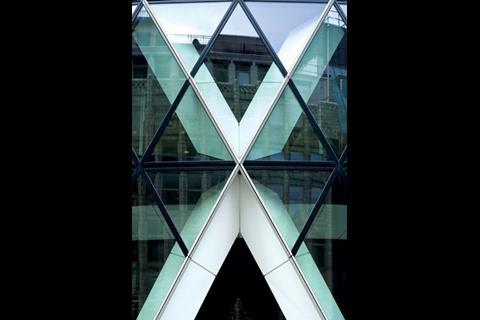
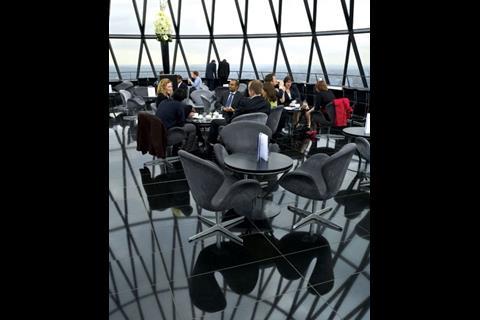

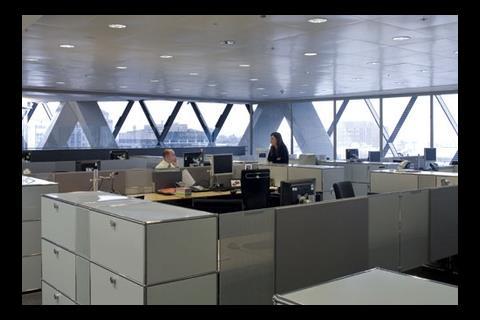
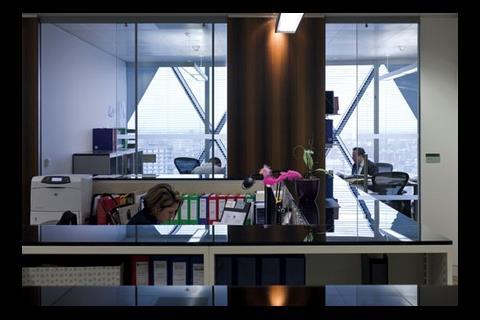

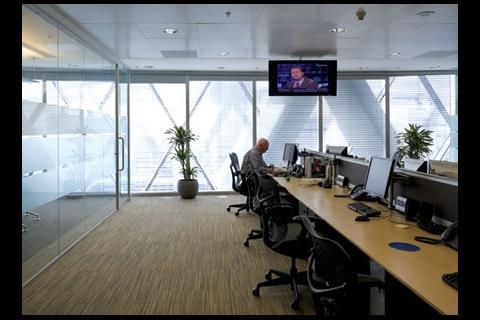

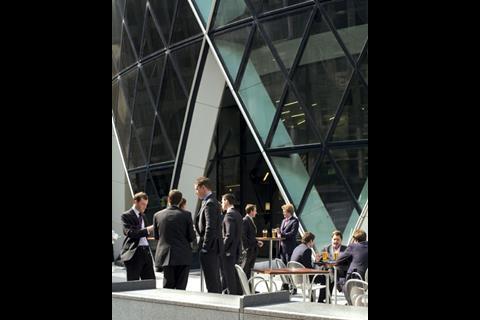
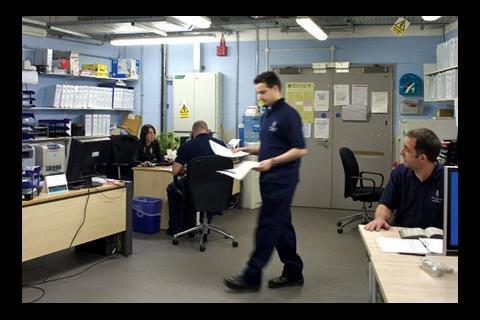




2 Readers' comments